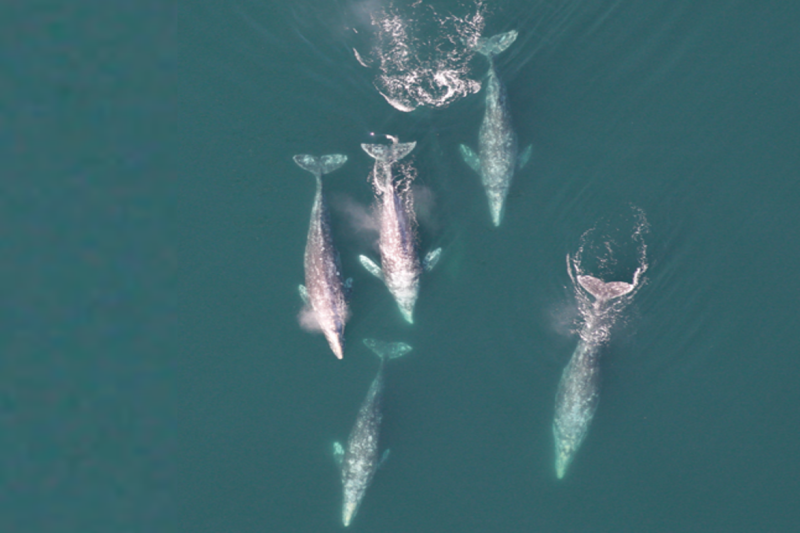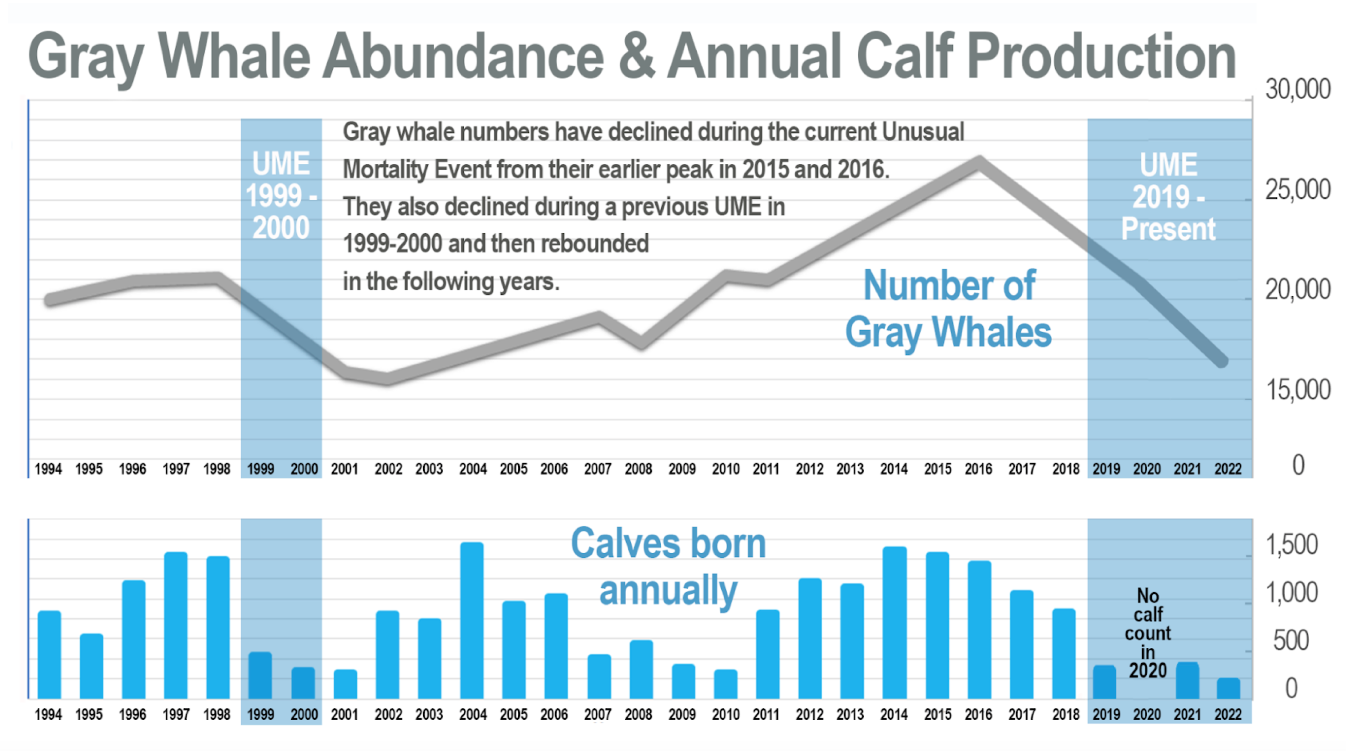
By NOAA NEWS SERVICE and YACHATSNEWS
The number of gray whales that migrate along the West Coast continued their decline this winter from a high seven years ago, but researchers have found clues suggesting their numbers may soon start to rebound.
Researchers with the National Oceanic and Atmospheric Administration counted whales migrating south off the coast of California from late December to mid-February. They estimate the current gray whale population to be 14,526, according to the results of their study published in late June.
That’ continues the downward trend from a high of 26,960 whales counted in 2015-16 and 16,650 whales in 2021-22.
The decline is thought to be connected, at least in part, to shifts in the distribution and abundance of prey that gray whales feed on during summer months spent in the Arctic, NOAA said in a news release.
“Gray whales serve as ecosystem sentinels, alerting us to possible changes in the environment,” the agency said.
The 2022-23 estimate is comparable to the number of gray whales when counts first began in the late 1960s, NOAA said. The species at that time was recovering from the commercial whaling era. As numbers grew, gray whales were removed from Endangered Species Act protection in 1994.

The steep decline documented in 2019 led NOAA to declare an “unusual morality event” for the gray whales, the second time the agency has done so. The first came in 1999-2000. The latest decline unleashed a federal effort to investigate the cause of the die-off, to determine the overall effect on the whale population, and to determine what role the environment led to the problems.
But NOAA and university researchers made other observations over the last several months at wintering lagoons in Mexico and along the U.S. West Coast. They suggest that small shifts in some trends could offer reason for optimism:
- The body condition of gray whales in the lagoons in Baja California, Mexico improved in 2023;
- Whales in the lagoons have increased in number, with biologists counting more mothers with calves in 2023 than any of the last five years;
- Fewer whales died and stranded in Mexico this year than in any year since the unusual die-off started in 2019;
- Fewer gray whales have stranded along the West Coast during their northward migration this year than during the peak years of the 2016-22 die-off.
Since 2019 a total of 633 stranded whales have been recorded along the west coasts of Mexico, the U.S. and Canada, NOAA said.
But the numbers appear to be declining, the agency reported. There were 216 strandings recorded in 2019, 172 recorded in 2020, 115 in 2021, 105 in 2022, and 32 through mid-April this year.
Jorge Urbán Ramírez, a professor at the University of Baja California Sur who leads gray whale research in Mexico, said the reduced strandings this year suggest “the gray whale mortality event may be slowing.”
NOAA biologists just recently finished counting gray whale calves migrating north with their mothers along the California coast and expect to report the results in a few months. They hope the numbers will reflect a similar trend to that seen in the Mexican lagoons, NOAA said in its news release.
Researchers from NOAA’s Southwest Fisheries Science Center typically conduct gray whale population counts during the southbound migration on a cycle of two out of every five years. However, an additional count was conducted this year and another count will be conducted in the winter of 2024 to track the trajectory of the gray whale population.
Aimée Lang, a research biologist who helped lead this years’ gray whale count, said there were “promising signs” of small increases in the number of calves in Mexico.
“Following the decline in numbers of stranded whales and improvements in body condition, the next step toward recovery of the population would be increased reproductive success,” Lang said in the NOAA report.


